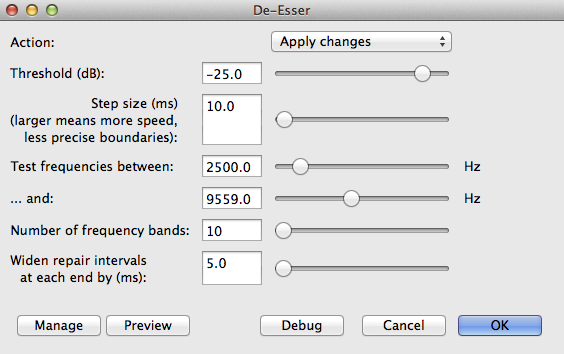If you’re still eager to mess with it more, you could apply the DeEsser. This helps tame the harsh SS sounds at the beginnings and endings of words.
This is a copy of that clip with gentle DeEssing applied after Mastering and Noise Reduction.
These are the DeEsser settings I used on that clip. Please note all these tools depend on each other. Don’t leave any out, add any, or rearrange the process.

This is where to get the DeEsser I used.
https://forum.audacityteam.org/t/updated-de-clicker-and-new-de-esser-for-speech/34283/1
Koz